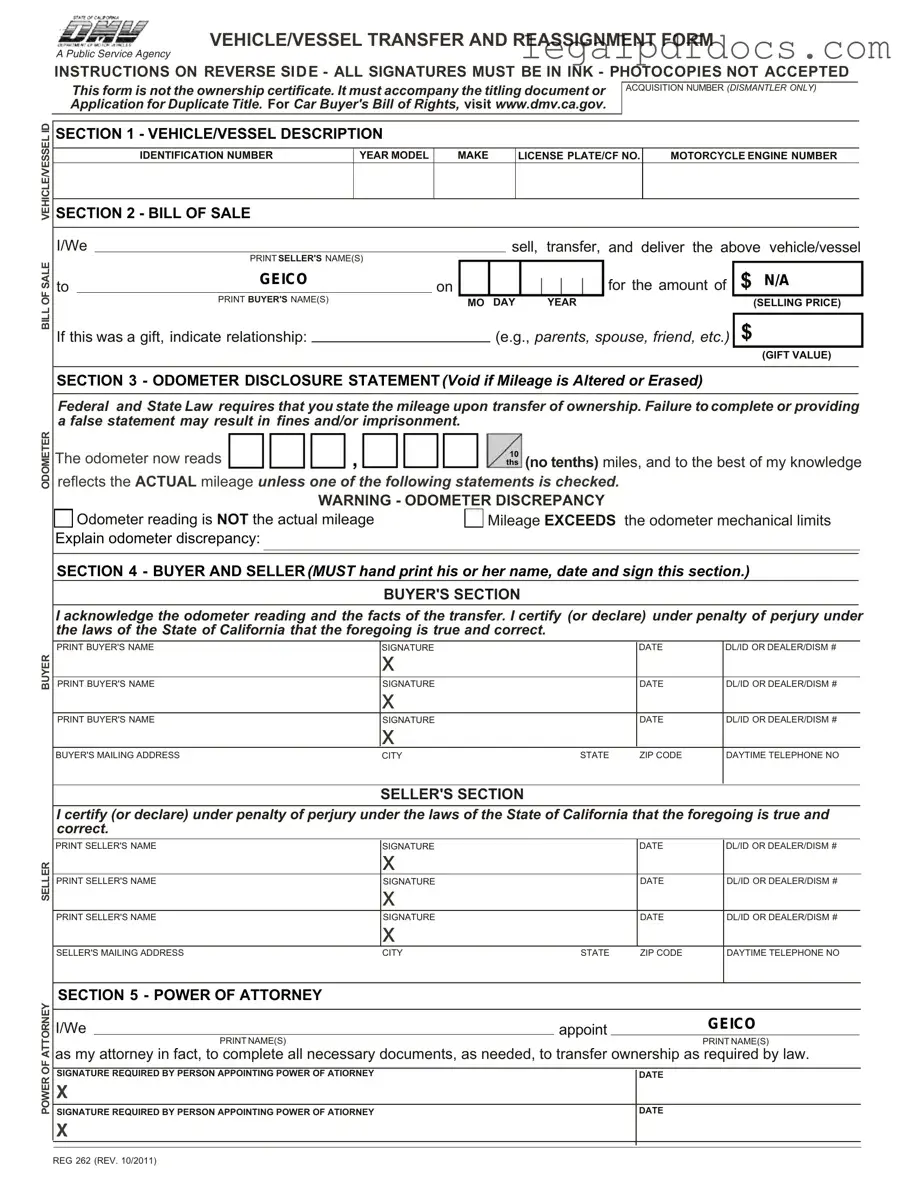The California Form REG 262, also known as the Vehicle/Vessel Transfer and Reassignment Form, plays a crucial role in the process of transferring ownership of a vehicle or vessel within the state. This form is not a certificate of ownership; instead, it serves as a necessary accompaniment to the title or an application for a duplicate title. It requires careful completion to ensure all pertinent details are accurately recorded, including the vehicle or vessel identification number, year, make, and model. The form is structured into several sections, each designed to capture specific information. For instance, the Bill of Sale section allows sellers to document the transaction, noting the buyer’s details and the sale price or gift value. Additionally, an odometer disclosure statement is included, mandating the seller to report the mileage at the time of transfer, as failing to do so can lead to significant penalties. The form also includes sections for both buyer and seller signatures, affirming the accuracy of the information provided, and a power of attorney section, which permits designated individuals to act on behalf of the owner in completing necessary paperwork. Understanding the nuances of this form is essential for both parties involved in the transaction, ensuring a smooth transfer process while protecting their rights.
